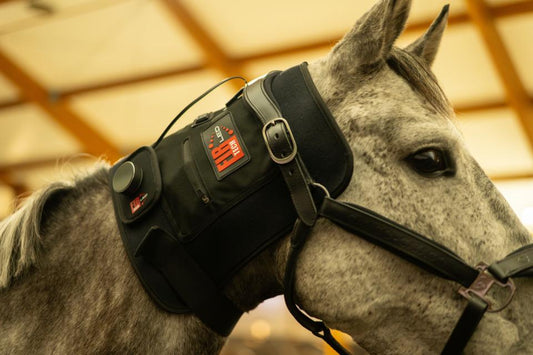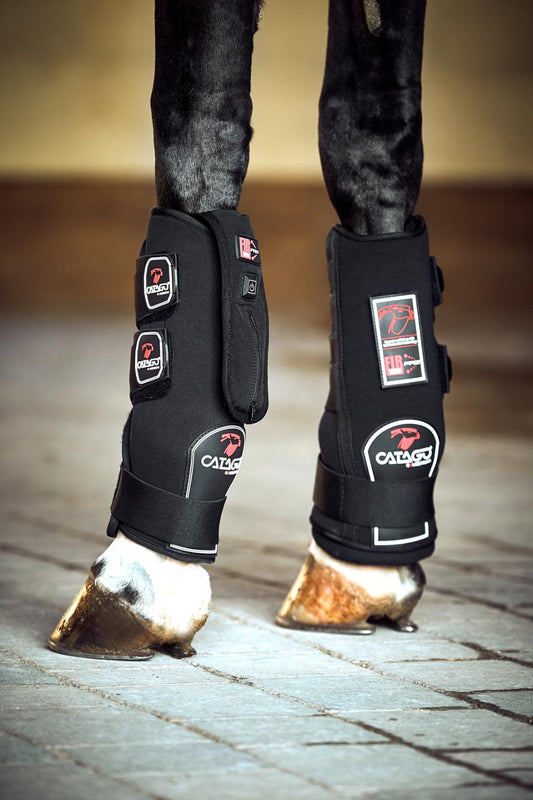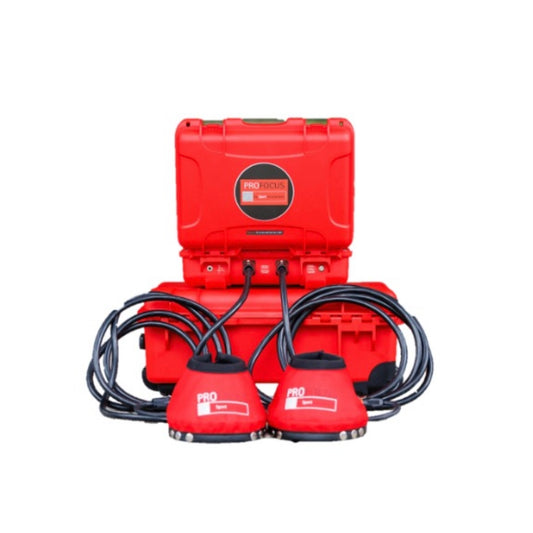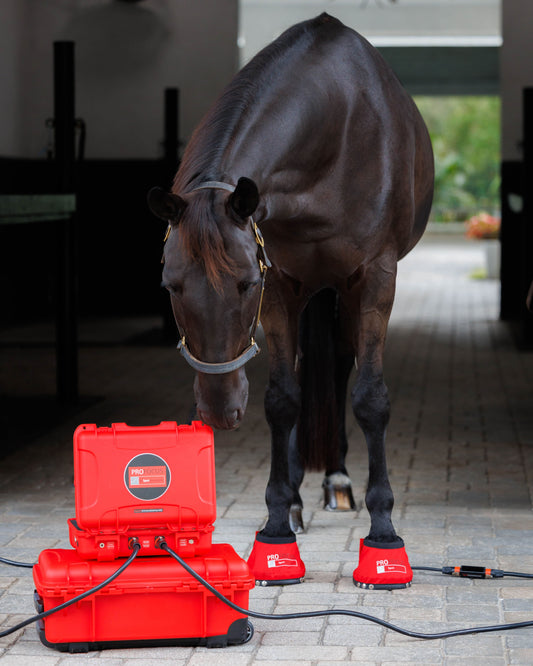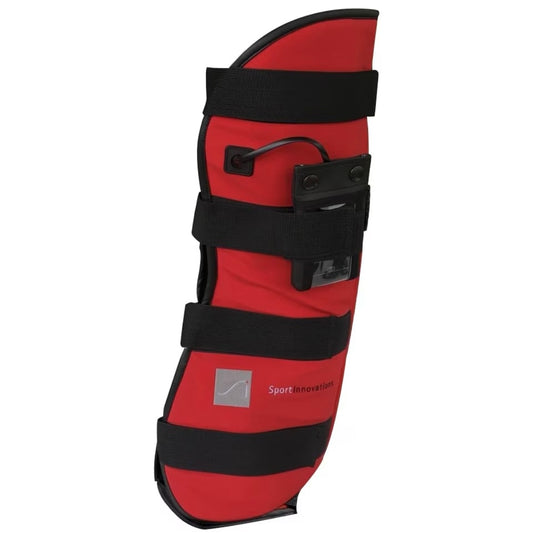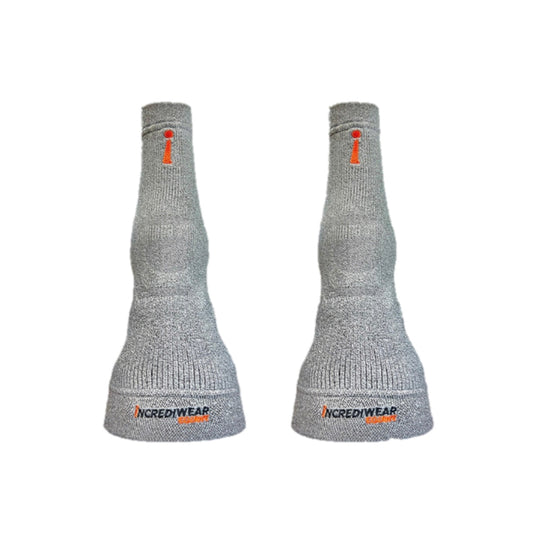Hoof Injuries
Hoof Abscess
A hoof abscess is a painful condition in horses that occurs when bacteria enter the hoof, leading to an infection. The infection causes pus to form inside the hoof, resulting in pressure and significant discomfort for the horse. Hoof abscesses are a common cause of sudden lameness and can affect horses of all types and disciplines.
Causes of Hoof Abscesses
Hoof abscesses are typically caused by bacterial infections that penetrate the hoof, often due to trauma, poor hoof care, or environmental conditions. The primary causes include:
- Injury or Trauma to the Hoof: Stepping on sharp objects or a puncture wound can introduce bacteria into the hoof, one of the most common causes of hoof abscesses.
- Improper Hoof Care: Lack of regular trimming, overgrown hooves, or improper shoeing can create cracks or weaknesses, allowing bacteria to enter.
- Wet or Muddy Conditions: Prolonged exposure to wet, muddy environments can soften the hoof and lead to cracks or splits, which can invite bacteria. This can also contribute to conditions like thrush, increasing the risk of an abscess.
- Poor Hoof Hygiene: Accumulation of dirt, debris, and manure can harbor bacteria if hooves aren't regularly cleaned, leading to infection.
- Pre-existing Hoof Conditions: Conditions like laminitis, founder, or poor circulation can increase the likelihood of abscess formation by changing the hoof structure and making it easier for bacteria to enter.
How to Prevent Hoof Abscesses
While some factors leading to hoof abscesses cannot be entirely avoided, there are several proactive steps to reduce the risk:
- Regular Hoof Care: Ensure your horse’s hooves are trimmed regularly (every 6-8 weeks) by a qualified farrier to prevent cracks and imbalances that could lead to infections.
- Keep Hooves Clean and Dry: Clean hooves regularly to remove dirt, debris, and manure, and ensure they dry thoroughly, especially in wet or muddy conditions.
- Proper Hoof Hygiene: Consider using hoof boots to protect the hooves from debris, especially when your horse is in wet or muddy environments.
- Ensure Proper Shoe Fit: If your horse wears shoes, ensure they are properly fitted to prevent pressure points and the entry of dirt and debris.
- Monitor for Hoof Issues: Regularly inspect hooves for cracks, bruises, or abnormalities. Early detection can prevent abscess formation.
- Provide a Clean Environment: Keep your horse’s stable or paddock clean and dry to reduce their exposure to mud and standing water.
What to Do If Your Horse Has a Hoof Abscess
If you suspect your horse has a hoof abscess, immediate action is important to relieve pain and start treatment:
- Call Your Veterinarian or Farrier: Contact your veterinarian or farrier immediately for diagnosis. They may perform hoof testing or imaging procedures to confirm the abscess.
- Rest the Horse: Keep your horse on stall rest to prevent further irritation and allow the abscess to heal. Avoid work or exercise.
- Hot Soaks: Soak the affected hoof in warm water with Epsom salts for 20-30 minutes several times a day to reduce swelling and promote drainage.
- Hoof Drainage: A veterinarian or farrier may need to create a small hole in the hoof to allow pus to drain, which reduces pressure and provides relief.
- Pain Management: Your veterinarian may prescribe NSAIDs to manage pain and inflammation associated with the abscess.
- Bandaging the Hoof: After draining, your veterinarian may recommend bandaging the hoof to protect it from dirt and bacteria, using waterproof dressings to keep it clean and dry.
- Monitor for Complications: Watch for signs of complications such as infection spreading to the bone (osteomyelitis) or laminitis. Seek further medical attention if needed.
Therapies for Healing a Hoof Abscess
Several treatments can support healing and alleviate pain during recovery:
- PEMF Therapy (Pulsed Electromagnetic Field): This non-invasive therapy helps reduce inflammation, promotes circulation, and speeds up tissue healing, supporting the recovery of the affected hoof.
- LED Therapy: LED light therapy stimulates circulation, reduces inflammation, and promotes tissue regeneration, aiding healing after the abscess is drained.
- Cooling Therapy: Cold compresses or ice packs help reduce swelling and pain in the early stages of abscess development or after draining.
- Infrared Therapy: Infrared light penetrates deeply into the tissues, promoting healing, reducing pain, and minimizing inflammation in the affected area.
- NMES Therapy (Neuromuscular Electrical Stimulation): NMES improves circulation and stimulates muscle activity around the injured area, assisting in recovery.
Conclusion
Hoof abscesses are a painful but treatable condition in horses. With proper hoof care, regular inspections, and a clean environment, the risk of developing abscesses can be reduced. If your horse develops an abscess, prompt treatment, rest, and therapies like PEMF, LED therapy, cooling therapy, and infrared therapy can help alleviate pain and speed up healing. Always consult with your veterinarian for the most appropriate course of action to ensure your horse’s well-being and quick recovery.
Laminitis (Founder)
Laminitis, commonly known as founder, is a serious and painful condition affecting the hooves of horses. It occurs when the laminae, the structures that attach the hoof wall to the coffin bone, become inflamed. This inflammation can cause damage and weaken the attachment between the hoof wall and coffin bone, leading to rotation or sinking of the coffin bone. If not properly managed, laminitis can result in permanent damage or even euthanasia in severe cases.
Causes of Laminitis (Founder)
Laminitis can be triggered by various factors, which may act individually or together. Common causes include:
- Dietary Factors:
- Obesity: Overweight horses, particularly those with metabolic disorders such as Equine Metabolic Syndrome (EMS), are more prone to laminitis due to excess weight placing additional strain on the hooves.
- Endocrine Disorders:
- Infections and Inflammation:
- Excessive Exercise: Overexertion, especially on hard surfaces or during sudden increases in training intensity, can lead to mechanical strain on the hooves, potentially contributing to laminitis.
- Toxins and Medications: Certain toxins (e.g., those produced by systemic diseases like colitis) or excessive corticosteroid use can increase the risk of laminitis.
How to Prevent Laminitis
While some causes of laminitis cannot be entirely avoided, there are several preventive measures to reduce the risk:
- Proper Diet Management:
- Regular Veterinary Monitoring:
- Exercise Management:
- Hoof Care:
- Environmental Management:
What to Do If Your Horse Has Laminitis
If you suspect your horse has laminitis, immediate intervention is crucial to prevent further damage and provide relief. Follow these steps:
- Call Your Veterinarian Immediately:
Laminitis is a veterinary emergency. Contact your veterinarian right away for diagnosis and treatment. Your vet may perform hoof testing and diagnostic imaging (e.g., X-rays) to assess the damage. - Limit Movement and Provide Rest:
Immediately limit movement and provide box rest to prevent further strain on the hooves. Ensure your horse has soft bedding to reduce pressure on the hooves. - Pain Management:
Your veterinarian will likely prescribe NSAIDs to reduce inflammation and relieve pain. In some cases, stronger pain medications may be required. - Monitor for Further Signs:
Watch for signs of further rotation or sinking of the coffin bone. Your vet may take periodic X-rays to assess the condition’s progression. - Manage Underlying Conditions:
If laminitis is secondary to another condition (e.g., infection or metabolic disease), your veterinarian will address the primary cause and adjust treatment accordingly.
Therapies for Treating Laminitis
There are several therapies to treat and manage laminitis, depending on severity. The main treatment goals are to reduce inflammation, alleviate pain, and prevent further hoof damage.
- Cooling Therapy:
Cold therapy, such as cold hosing or ice baths, is effective in the early stages of laminitis. Ice boots or soaking the hooves in cold water for 20-30 minutes several times a day helps reduce inflammation and prevent further damage to the laminae. - PEMF Therapy (Pulsed Electromagnetic Field):
PEMF therapy helps promote blood flow, reduce inflammation, and enhance the healing process. It can be used both in the acute phase to manage pain and swelling, and during recovery to promote healing. - Infrared Therapy:
Infrared light therapy reduces inflammation and improves circulation in the affected hooves. It also helps with pain management and supports the healing process. - NMES Therapy (Neuromuscular Electrical Stimulation):
NMES therapy stimulates muscles and improves circulation. While not commonly used in the acute phase, it can aid recovery by improving blood flow and reducing muscle atrophy due to immobility. - Diet and Weight Management:
Managing your horse’s diet is crucial for both preventing and treating laminitis. Your veterinarian may recommend a specialized diet and weight control measures to reduce stress on the hooves. - Box Rest:
Strict box rest is usually necessary to prevent further hoof damage. Restrict movement until the horse shows signs of improvement.
Conclusion
Laminitis is a serious and painful condition that can lead to long-term consequences if not treated properly. By understanding the causes, including dietary factors, obesity, and endocrine diseases, you can take proactive steps to protect your horse. Immediate intervention, rest, and appropriate therapies—such as cooling therapy, PEMF therapy, infrared therapy, and shockwave therapy—are key to managing laminitis and promoting healing. Always consult with your veterinarian for a tailored treatment plan to ensure the best possible outcome for your horse.
Quarter Cracks
A quarter crack is a vertical crack that occurs in the hoof wall, typically on the sides (quarters) of the hoof. This common condition can lead to significant pain and lameness if not properly treated. Quarter cracks range from superficial fissures to deeper, more serious cracks affecting the underlying hoof structures.
Causes of Quarter Cracks
Quarter cracks can be caused by a variety of factors, often related to stress, trauma, or poor hoof care. The primary causes include:
- Poor Hoof Care:
- Trauma and Injury:
- Hoof Imbalance:
- Environmental Factors:
- Genetic Factors:
- Infection or Abscess:
- Incorrect or Poorly Fitting Shoes:
How to Prevent Quarter Cracks
Preventing quarter cracks involves proper hoof care and management. The following steps can help reduce the risk of their development:
- Regular Hoof Care:
- Shoeing:
- Avoid Trauma:
- Environmental Management:
- Balanced Diet:
What to Do if Your Horse Has a Quarter Crack
If your horse develops a quarter crack, prompt treatment is essential to prevent it from worsening and causing lameness. Follow these steps:
- Call Your Veterinarian or Farrier:
- Rest and Box Rest:
- Clean the Hoof:
- Protection and Padding:
- Monitor for Infection:
Therapies to Promote Healing
Several therapies can support the healing of quarter cracks:
- Cooling Therapy:
- LED Therapy (Light Therapy):
- PEMF Therapy (Pulsed Electromagnetic Field Therapy):
- Vibration Therapy:
- Hoof Care and Proper Shoe Fitting:
- Nutritional Support:
- Abscess Treatment (if applicable):
Conclusion
Quarter cracks are a serious issue that can cause pain, lameness, and long-term hoof problems if not treated promptly. Prevention is crucial, and it involves proper hoof care, shoeing, and attention to environmental factors. If your horse develops a quarter crack, quick intervention with rest, professional hoof care, and therapies such as cooling therapy, LED therapy, PEMF therapy, and vibration therapy can help promote healing and prevent further complications. Regular monitoring and consultation with your veterinarian and farrier will ensure the best possible outcome for your horse's hoof health.
Navicular Disease
Navicular disease, also known as navicular syndrome, is a degenerative condition affecting the navicular bone in the horse's hoof. It is a common cause of lameness, particularly in the forelimbs. This condition involves the degeneration of the navicular bone and the surrounding tissues, including the navicular bursa and deep digital flexor tendon.
Causes of Navicular Disease
Navicular disease is linked to various contributing factors, including:
- Conformation Issues:
- Overuse and Concussion:
- Trauma:
- Imbalanced Hooves:
- Genetic Predisposition:
- Poor Circulation:
- Inflammation:
How to Prevent Navicular Disease
While navicular disease may not always be fully preventable, the following management strategies can help reduce the risk:
- Regular Hoof Care:
- Avoiding Hard Surfaces:
- Proper Workload and Rest:
- Regular Exercise:
- Nutritional Support:
- Prompt Treatment of Hoof Injuries:
What to Do if Your Horse Has Navicular Disease
If you suspect your horse has navicular disease, prompt action is crucial for effective management:
- Consult a Veterinarian:
- Box Rest and Controlled Exercise:
- Pain Management:
- Farrier Care:
- Monitor for Lameness:
Therapies to Promote Healing and Manage Navicular Disease
Various therapies can be used to manage navicular disease and improve quality of life:
- PEMF Therapy (Pulsed Electromagnetic Field Therapy):
- Laser Therapy (LED Therapy):
- Infrared Therapy:
- Vibration Therapy:
- NMES Therapy (Neuromuscular Electrical Stimulation):
- Cooling and Compression:
- Nutritional Support:
Conclusion
Navicular disease is a chronic and degenerative condition that affects a horse’s ability to perform and move comfortably. Early detection and proper management are key to minimizing the impact of this disease. Regular hoof care, proper shoeing, and appropriate therapeutic treatments—such as PEMF therapy, LED therapy, and infrared therapy—can help manage navicular disease and provide comfort for the horse. Consistent monitoring and collaboration with your veterinarian and farrier are essential to ensuring the best outcomes for the affected horse.


